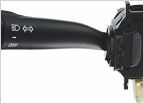-
Welcome to Tacoma World!
You are currently viewing as a guest! To get full-access, you need to register for a FREE account.
As a registered member, you’ll be able to:- Participate in all Tacoma discussion topics
- Communicate privately with other Tacoma owners from around the world
- Post your own photos in our Members Gallery
- Access all special features of the site
The fuse for my blinkers keep going out.
Discussion in '1st Gen. Tacomas (1995-2004)' started by 01Tacomacamburg4win, Oct 19, 2016.


 Tundra Brake Upgrade
Tundra Brake Upgrade Anyone use a Street Tailoc Tailgate Lock?
Anyone use a Street Tailoc Tailgate Lock? Favorite Brake Bleeding Method?
Favorite Brake Bleeding Method? Clutch disengeing issue
Clutch disengeing issue '02 5vze-fe fuel injector replacement
'02 5vze-fe fuel injector replacement Annoying electrical issue with turn signal
Annoying electrical issue with turn signal











































































